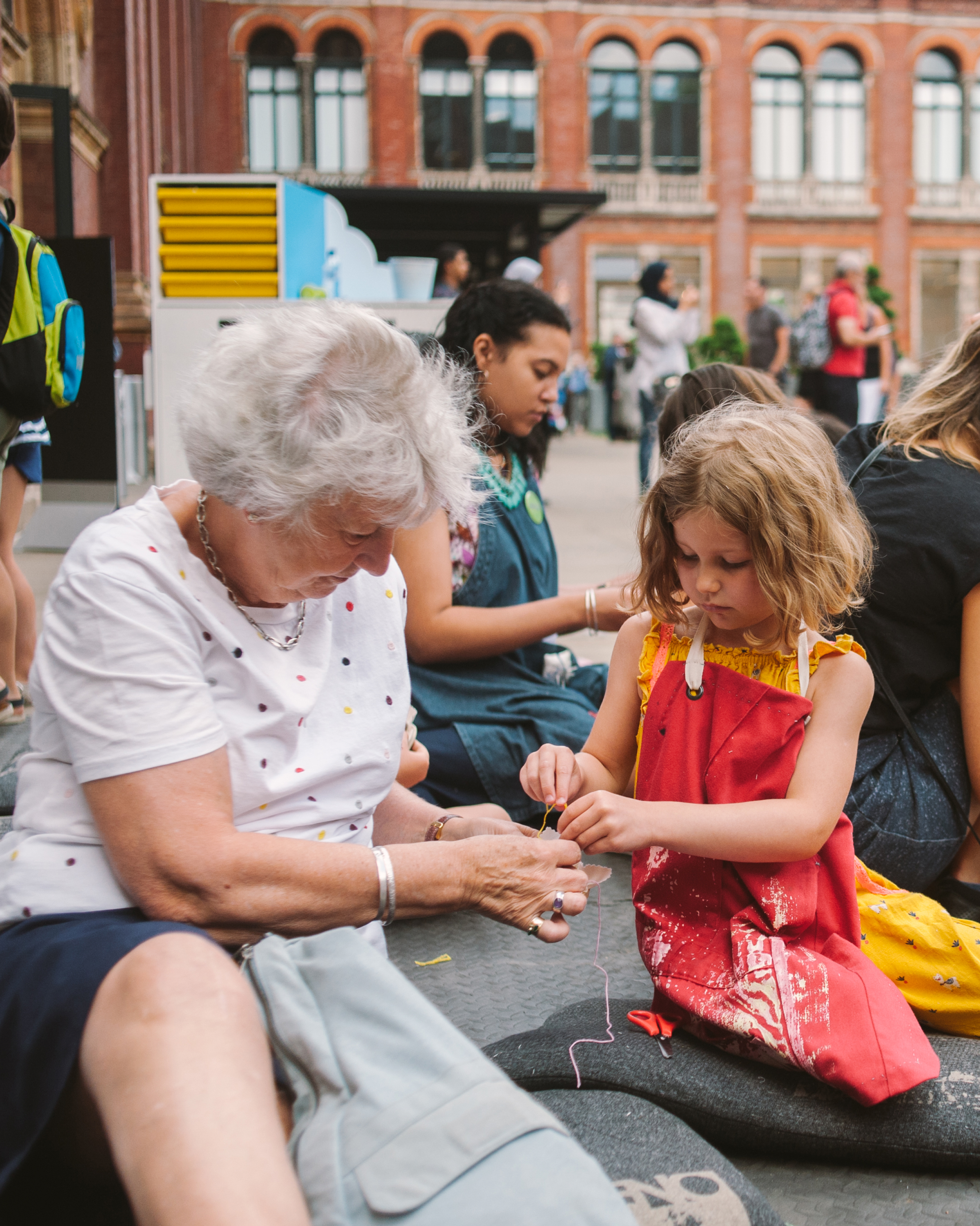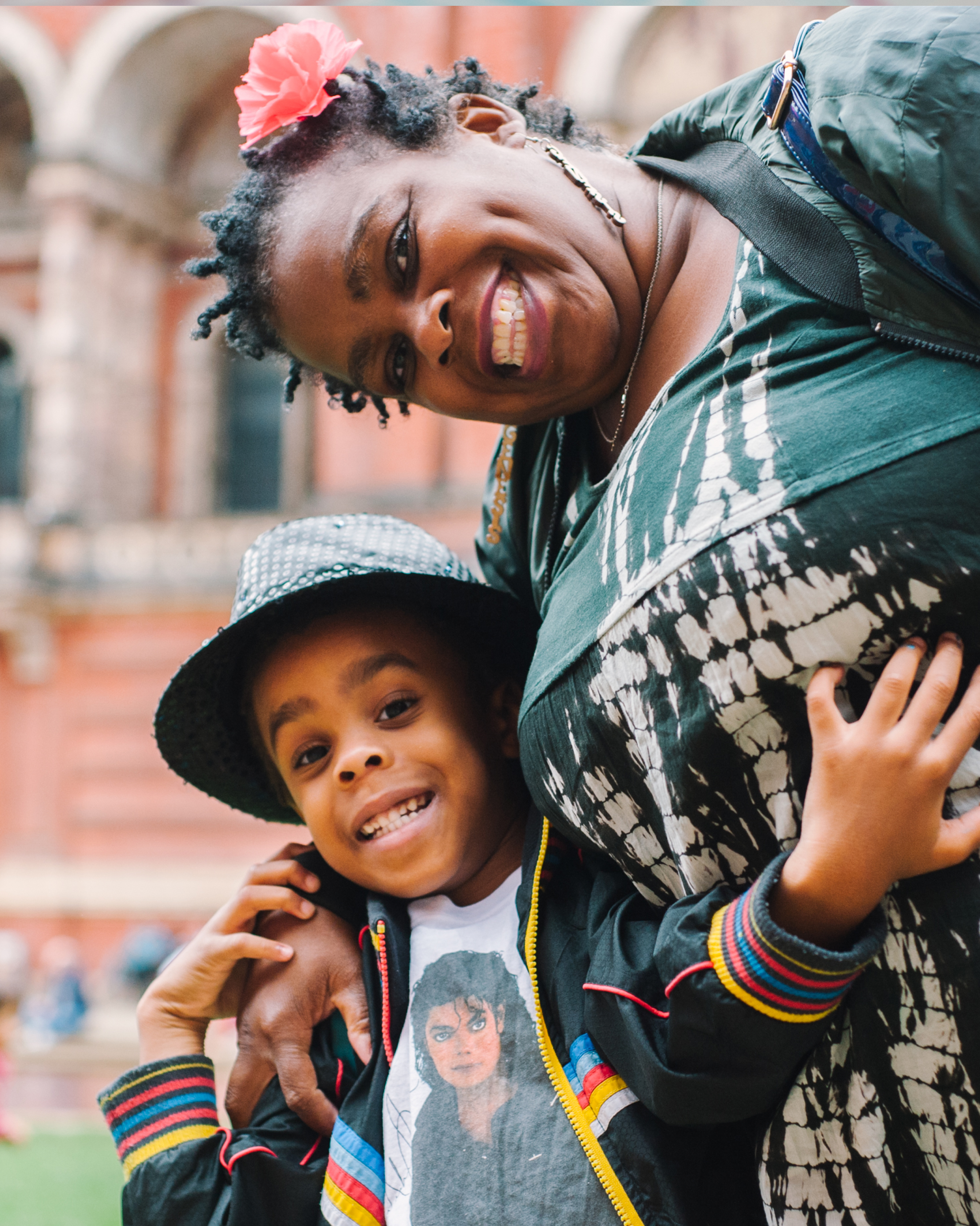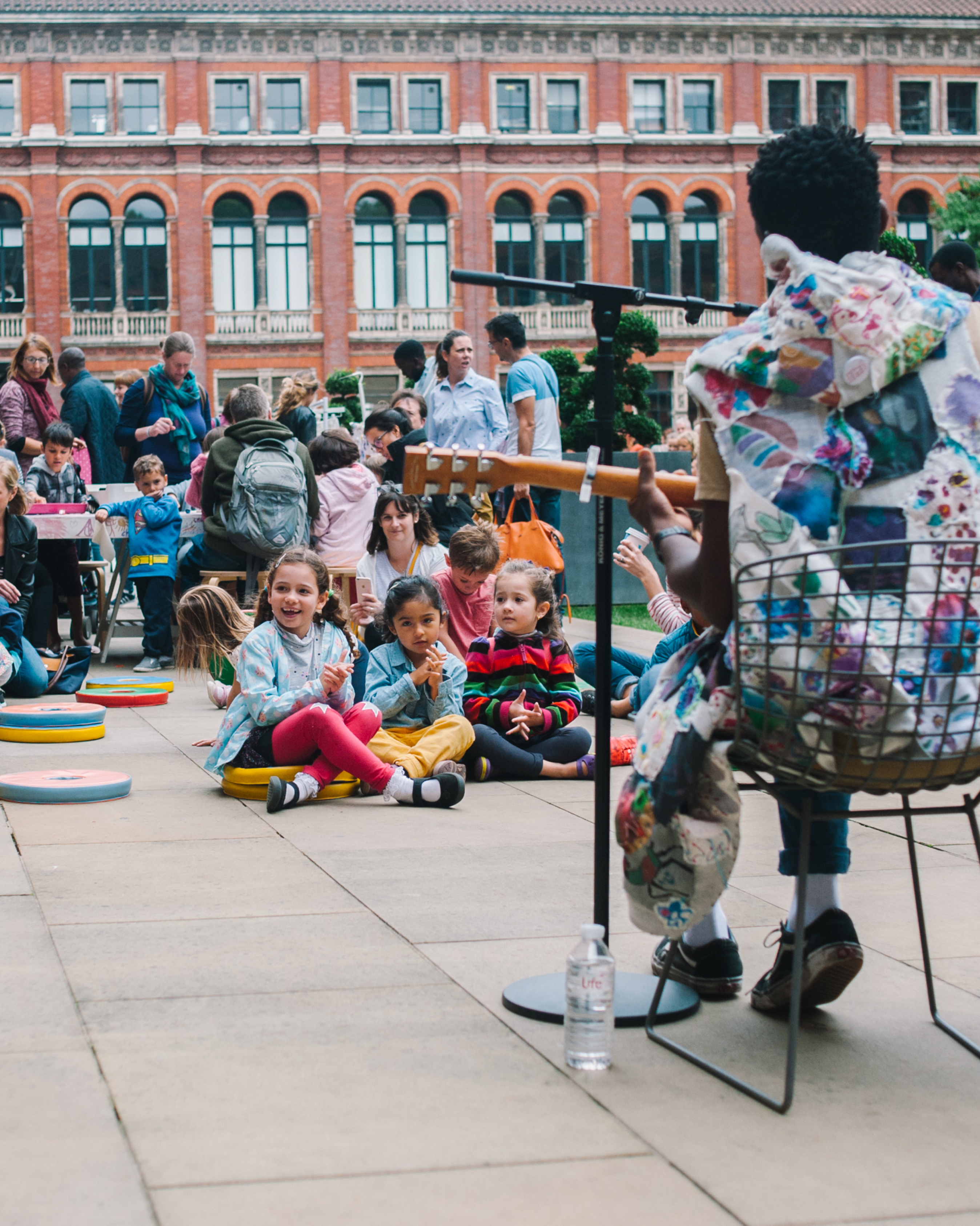
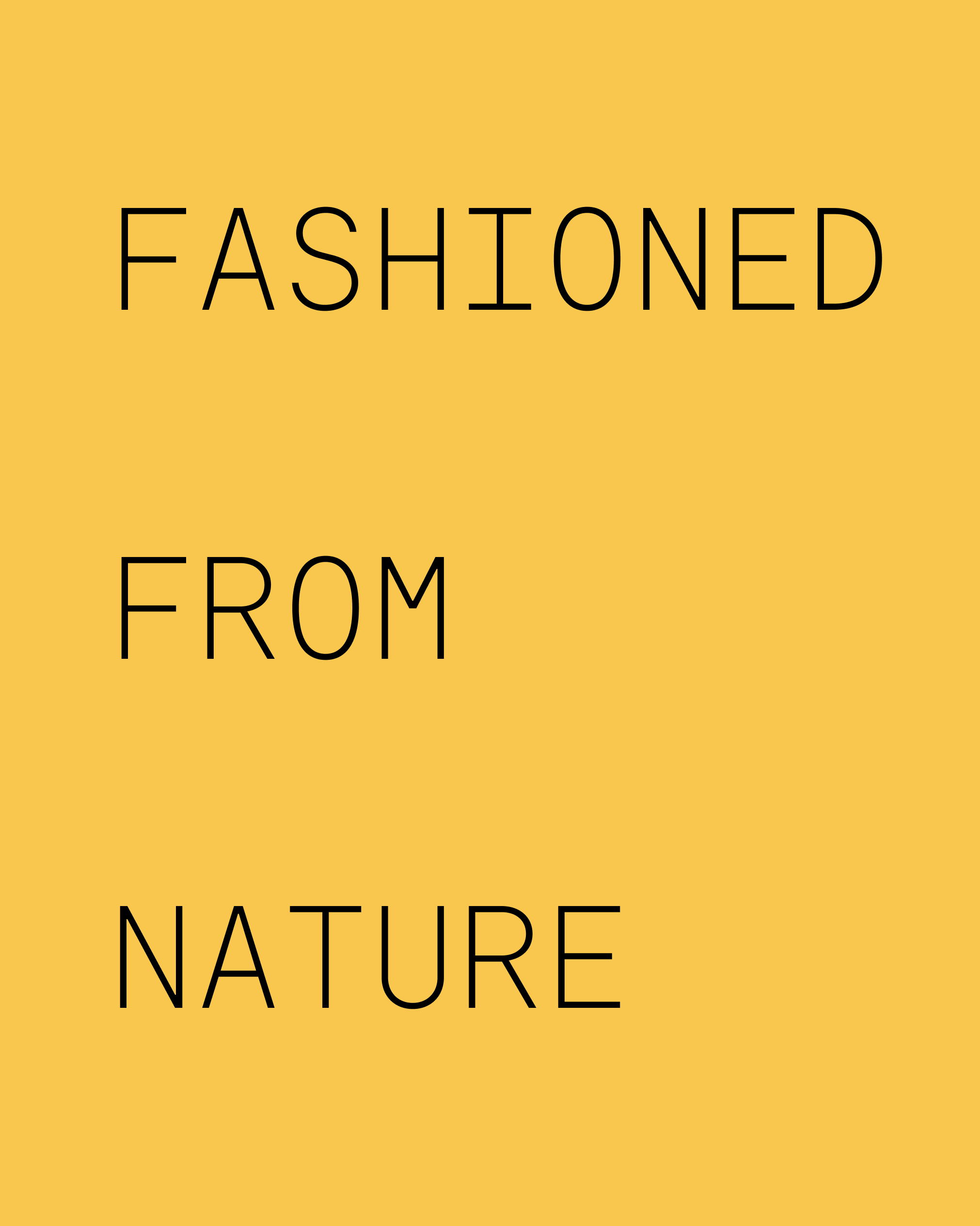

Overview
Role
Experience Designer
Producer
Sector
Arts & Culture
Informal Learning
Circular Fashion
Experience Designer
Producer
Sector
Arts & Culture
Informal Learning
Circular Fashion
Duration
3 months
Stakeholders
The Victoria & Albert Museum
V&A Families
OneByMe
3 months
Stakeholders
The Victoria & Albert Museum
V&A Families
OneByMe
Fashioned from Nature is a large-scale drop-in experience designed for V&A’s family audience. It looked at engaging children and young people in the sustainable design process and experiencing circularity in fashion production first hand.
The goal of this event was to create an opportunity for V&A family audience to engage with and learn about simple ways they can contribute to circularity in fashion, work with their peers and industry experts to create a bespoke collection of sustainable garments, develop 21st century skills and engage in intergenerational learning.
The activity took place over the period of three weeks and was inspired by the V&A’s Fashioned from Nature exhibition and designed in collaboration with the V&A Families learning team and sustainable fashion brand ONEBYME.
The goal of this event was to create an opportunity for V&A family audience to engage with and learn about simple ways they can contribute to circularity in fashion, work with their peers and industry experts to create a bespoke collection of sustainable garments, develop 21st century skills and engage in intergenerational learning.
The activity took place over the period of three weeks and was inspired by the V&A’s Fashioned from Nature exhibition and designed in collaboration with the V&A Families learning team and sustainable fashion brand ONEBYME.
. . . .
![]()

Problems FFN Tackles

Design Approach

01
Emphatise & Define
Audience Context
The V&A Families team have the insights into the target audience’s needs, frustrations and wants available at the start of the project. The key findings are summarised below as are further barriers that prevent families to take part in V&A family programming.
Key challenges and barriers facing families and children coming to the V&A:
Key challenges and barriers facing families and children coming to the V&A:
- Time
- Cost
- Location
- Lack of relevancy and connection to museum and the collection
The wider context and major issues for UK families:
- Educational disparity and economic equality
- Future of work and digital transformation (4th Industrial revolution)
- Climate emergency
- Resilience and empathy
- Gender equality and identity
- Age and care giving
- Play deficit
Defined Criteria

02
Ideate
Generating Ideas
The Fashioned from Nature experience drew on key themes from the V&A’s major temporary exhibition of the same name. The exhibition traced the complex relationship between fashion and the natural world since 1600 and amongst other subjects, it looked at the role of design in creating a better, more sustainable fashion industry.
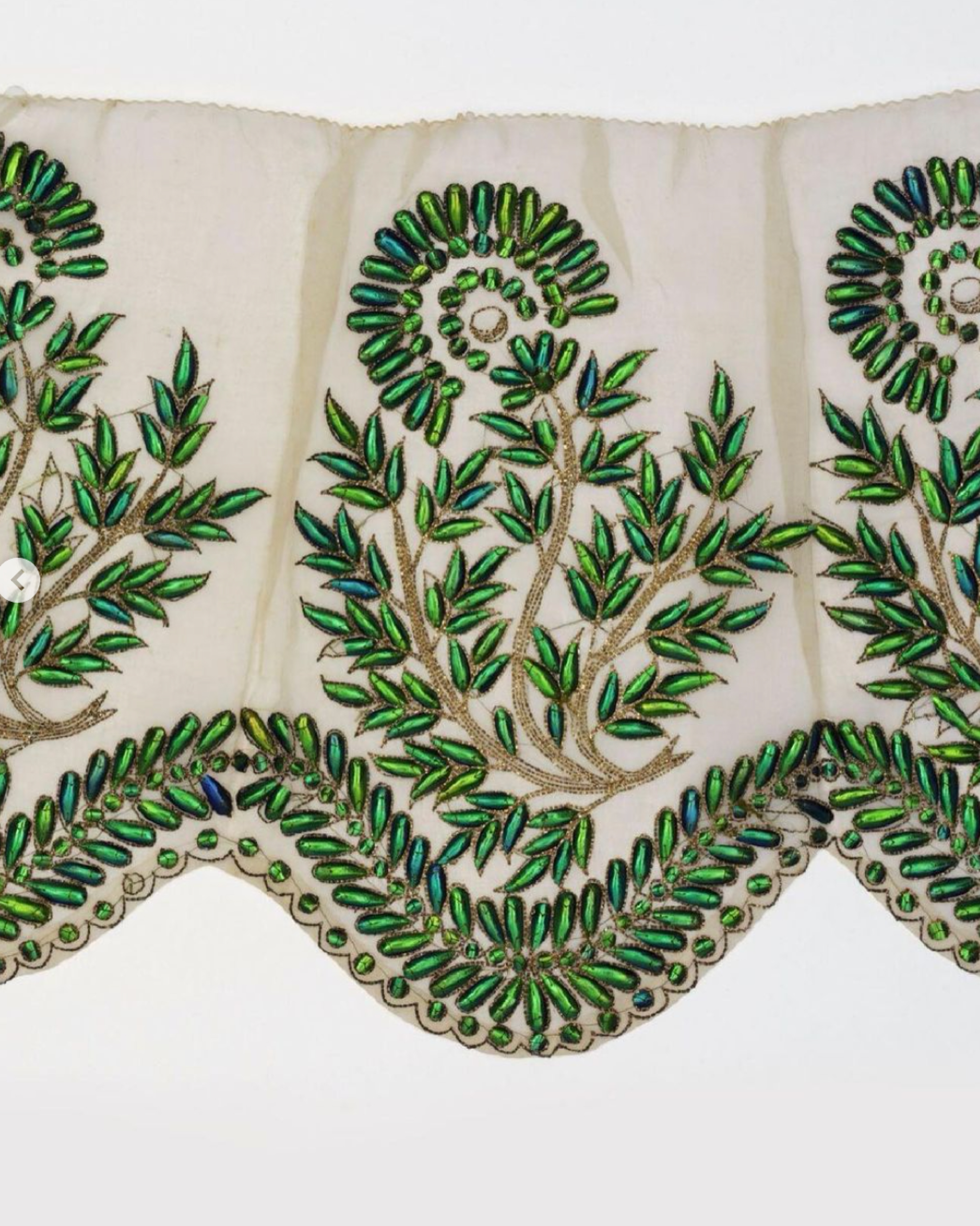
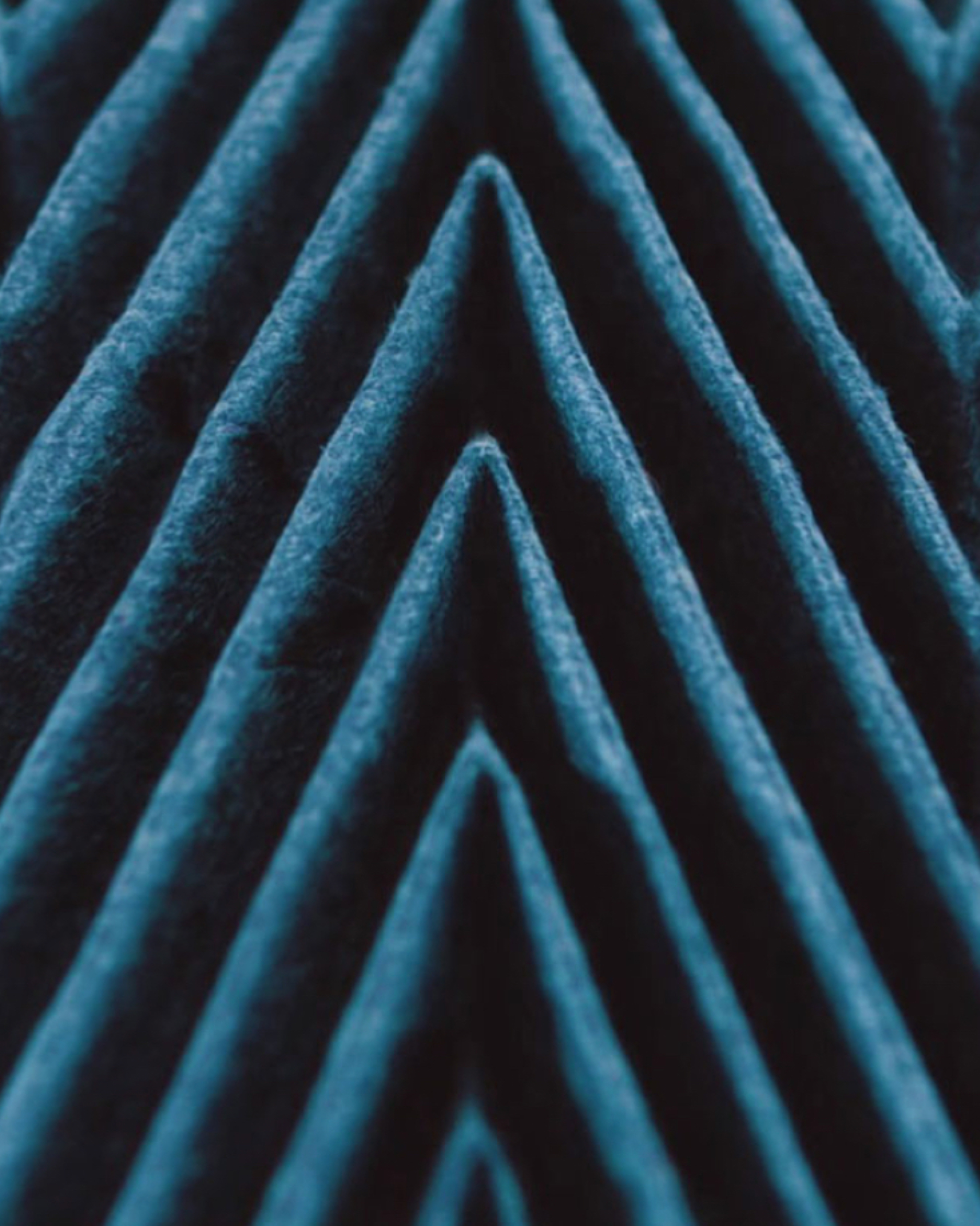

The experience was designed in collaboration with ONEBYME- a gender-fluid, urban sustainable fashion brand who specialises in crafting garments from one piece of cloth, woven from 100% natural fibres by UK mills.
Incorporating the themes explored at the V&A exhibition and leveraging the ONEBYMY practice, the experience evolved into an examination of the circular fashion process that families were encouraged to actively contribute to.
The experience took place over a period of four weeks and was split into five areas. In one area, families embellished patches of organic cotton or wool using a variety of embroidery techniques.
Incorporating the themes explored at the V&A exhibition and leveraging the ONEBYMY practice, the experience evolved into an examination of the circular fashion process that families were encouraged to actively contribute to.
The experience took place over a period of four weeks and was split into five areas. In one area, families embellished patches of organic cotton or wool using a variety of embroidery techniques.
In another area, families used non-toxic textile markers to add to their embellishment.
In the third area was a large stretch of fabric with outlined one-piece patterns (image below) that were to be turned into real bespoke garments by ONEBYME designers when covered with patches made by families.
Any fabric offcuts were disposed of in a wormery in area number four, to be yielded into a compost.
Area number five was made up by clothes racks with finished garments families could try on and find their little patches sewn into the fabric.
In the third area was a large stretch of fabric with outlined one-piece patterns (image below) that were to be turned into real bespoke garments by ONEBYME designers when covered with patches made by families.
Any fabric offcuts were disposed of in a wormery in area number four, to be yielded into a compost.
Area number five was made up by clothes racks with finished garments families could try on and find their little patches sewn into the fabric.
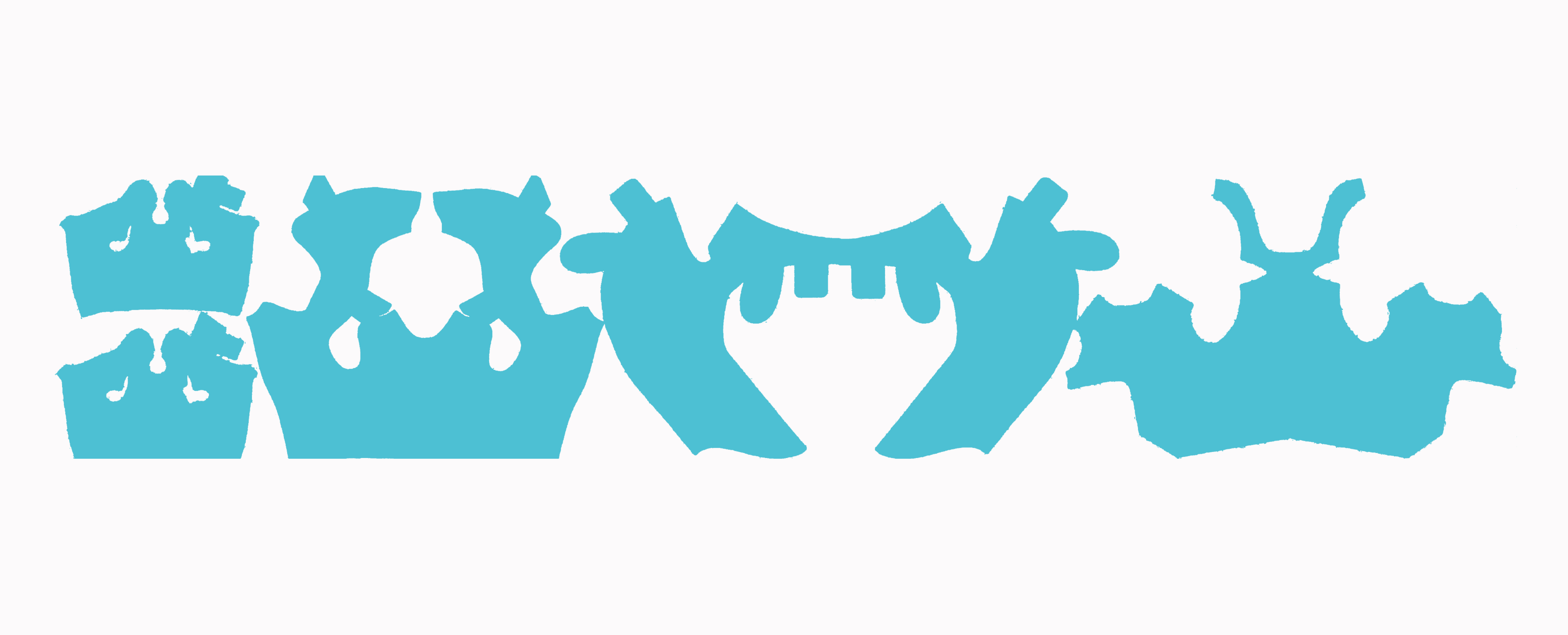
03
Prototype & Test
Producing & Testing FFN
Any materials that were used during this experience were 100% sustainable. This includes 100% natural fibres produced by UK mills, organic cotton used for patches and embroidery threads and non toxic textile markers.
Testing was conducted during the first day (soft launch) of running the activity. The main testing methods were observation, conversation and written feedback. The wormery was created and tested by ONEBYME in their studio and continued to be used after the activity ended.
Testing was conducted during the first day (soft launch) of running the activity. The main testing methods were observation, conversation and written feedback. The wormery was created and tested by ONEBYME in their studio and continued to be used after the activity ended.
Test Goals
- to determine the accessibility & intuitiveness of the experience for V&A families
- to test the suitability of the location (The John Madejski Garden at the V&A)
- to understand how much facilitation will be needed from V&A learning assistant team and the management
- to identify any pain points and ways to overcome them
- to gauge audience behaviour, comments and overall satisfaction
Key Insights

04
Iterate & Launch
Iterations
Based the insights gained during the soft launch, I adjusted the staffing numbers accordingly and ensured there won’t be any permanent damage caused to the fabric of the museum building.
Launch
We noticed a large number of returning families who were keen see their pieces sewn onto the final garments.
The summer programme culminated in the end of the month when the team hosted a Family Festival in the museum garden.
Apart from embellishing more patches, families also tried on a full collection designed over the summer, made mini plant pots with fabric off-cuts and plaster, planted herbs into those pots using compost from the wormery and danced to live music.
The activity was much enjoyed by the families and general public. Over the 4 weeks, the activity attracted over 20.000 instances of participation.
The summer programme culminated in the end of the month when the team hosted a Family Festival in the museum garden.
Apart from embellishing more patches, families also tried on a full collection designed over the summer, made mini plant pots with fabric off-cuts and plaster, planted herbs into those pots using compost from the wormery and danced to live music.
The activity was much enjoyed by the families and general public. Over the 4 weeks, the activity attracted over 20.000 instances of participation.
What we leant:
- Families demonstrated sense of pride and ownership of what they co-created over the period of four weeks with other families; they showed creative confidence, creative and critical thinking and empathy and exercised their collaborative and communicative skills while participating in the activity
- Some families engaged with the activity for a number of hours and we also had many families who came back to make more patches and find their already made patches sewn onto the finished garments
- We noticed that adults were as immersed in the activity as their children, some adults were keen to participate without having any children with them
- Families naturally started chatting and teaching each other new stitching techniques while sat on a large rug embroidering
- We had families coming back to the museum asking to see and try on the finished garments weeks and months after the activity ended

